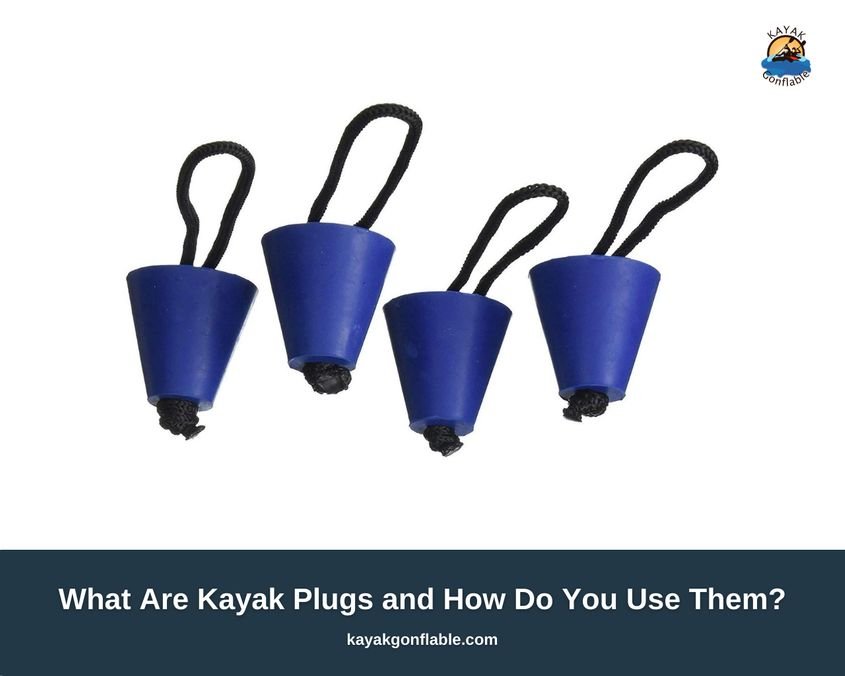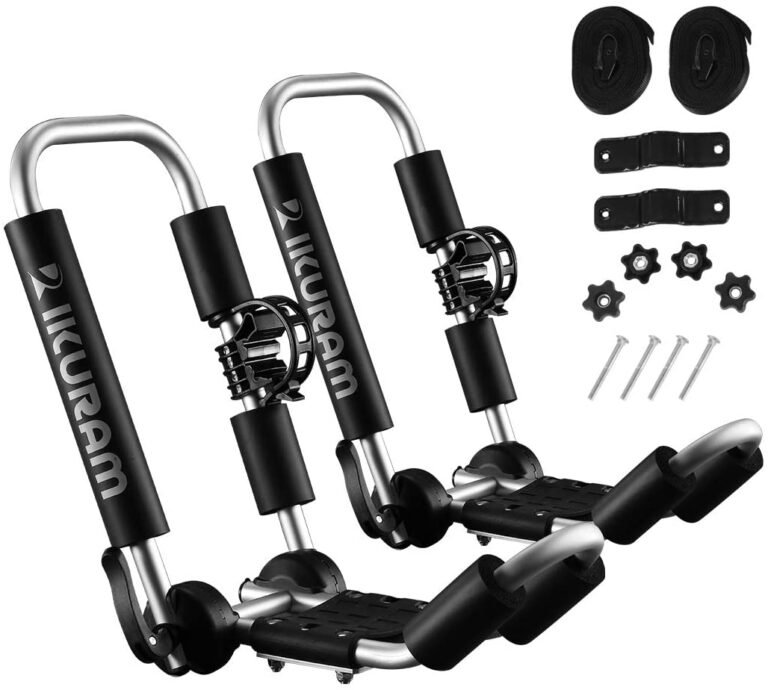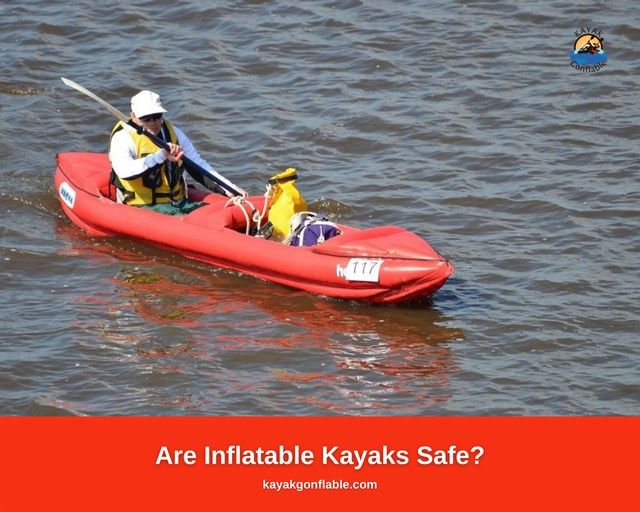What Are Kayak Plugs and How Do You Use Them?

What Is A Kayak Scupper Plug?
You may have observed that your kayak has holes and been perplexed as to why. Scupper holes, which are small holes on the floor of sit-on-top kayaks, are spaced to improve the buoyancy of the kayak by enabling water that gets inside the kayak to drain off.
This allows the kayak to drain on its own. As a result, you may relax and enjoy paddling without having to worry about draining water with sponges or other mechanical means as with sit-in kayaks. When the kayak is filled with water, it loses buoyancy and becomes difficult to paddle.
Scupper holes, which are designed as a safety feature to drain water out of the kayak from top to bottom, also keep you from sitting in a puddle. Scupper holes are not present in sit-in kayaks.
However, scupper holes designed to remove water from sit-in kayaks may permit water to enter the cockpit because the kayak deck is considerably closer to the surface of the water.
The purpose of scupper plugs, which are meant to fit into these holes, is to keep water out of the cockpit, which can happen in rough seas or when the kayak’s hull is pushed deep enough in the water to force water into the cockpit.
Scupper plugs are little rubber or plastic bits that fit into the scupper holes of a sit-on-top kayak, blocking or covering the drain holes. This prevents the sit-on-top kayak from self-draining.
Kayak Drain Plug Kit – What Scupper Plugs For Kayak Is Best?
1. Silicone Scupper Plugs Drain Holes Stopper Bung with Lanyard

Comes with a total of 8 pieces of kayak scupper plugs, each is equipped with a lanyard, easier to use and operate. The scupper plugs are made of reliable silicone material, which is sturdy and strong enough for your application. There are no worries as regards these rotting when soaking in water.
Each kayak scupper plug is approx. 1.5 inch in upper diameter and approx. 0.7 inch in lower diameter. Ensure the size of your kayak matches the plugs before buying.
2. Pelican Kayak Plugs

These kayak scupper plugs are ideal for keeping you dry, especially when your kayak is heavily loaded. They are easy to install and remove because they are made of flexible EVA material. And it’s compatible with a variety of Pelican kayak types. This item comes in a set of four.
The diameter of these scupper plugs is 4.4 cm (1.25 in.) and the width is 2.54 cm (1.16 in.). They come with a 12-inch length rope. They fit scuppers with a diameter of 3.8 cm to 4.4 cm (1.5 in. – 1.75 in.). They are sturdy and long-lasting, composed of EVA, a flexible and elastic material that allows them to fit in a variety of scupper holes.
They prevent water intrusion and drain the water from your boat’s inner hull. They’re easy to set up and takedown.
It says Pelican Boats Sit-On-Top Kayak 4-Pack Scupper Plugs on the package, but it fits scupper holes from other major brands including Hobie, Ocean Kayak, and others. Pelican makes one of the most durable and reasonably priced scupper plugs in the kayaking industry.
3. Ocean Kayak Scupper Plugs

Scupper Stoppers for Ocean Kayaks can be used to plug the scupper holes in your Old Town or Ocean Kayak’s cockpit. They’re fully circular and won’t fit into oval-shaped scupper holes.
Even when put under the seat, the soft substance of the stoppers is comfortable against the body. The Ocean Scupper Stoppers have a multi-ribbed design that helps the paddler keep dry while paddling by providing a superior seal.
The stoppers come in four sizes: extra-small, small, medium, and large. They are available in a variety of colors and are offered in pairs. The extra small scupper stopper has a top diameter of 1.25 inches and a bottom diameter of 1 inch.
The Ocean Kayak website has a size chart that might assist you in choosing the right Scupper Stopper for your Ocean Kayak. Ocean Kayak Scupper Stoppers are the way to go if you’re on a budget but yet want to invest in highly noticeable scupper plugs.
They come in a variety of sizes and colors, and they’re a great kayaking accent. If you’re here, you definitely have some sort of flare for kayaking. Review our article on the best 10 fishing kayaks under $1000. Not much of a fishing folk? Review our in-depth guide on the best inflatable kayaks on the market.
4. Lifetime Kayak Scupper Plugs

Six foam plugs are included in the Scupper Plugs accessory bundle. The Scupper Plugs are sized to fit kayak scupper holes and provide a drier kayaking experience. There are two sizes of Lifetime scupper plugs: small and medium.
The small size is compatible with Stealth, but the medium-sized Lifetime scupper plugs are required for the Stealth Pro. Scupper plugs come in a variety of sizes, depending on the model of your kayak.
If you own a Lifetime Kayak, the 90364 Scupper Plugs are a must-have accessory. They fit a wide selection of Lifetime kayaks, including the Triton, Hydros, Temptation, Manta, the Stealth Angler, Spitfire, Tamarack, and others.
It may not fit certain Lifetime kayaks, such as the Daylite and certain angler kayak models. These Lifetime kayak scupper plugs come in a six-piece bundle and are composed of easy-to-mold foam that makes fitting them into scupper holes a pleasure.
They’re not only simple to install and remove, but they also keep your ride dry. Overall, if you own a Lifetime kayak, they’re great value for money.
What’s The Purpose of A Kayak Drain Plug?
What is the purpose of a scupper plug if scupper holes are created as a safety element of sit-on kayaks? Why is it necessary to plug the holes?
Scupper plugs that cover scupper holes might come in helpful in a variety of scenarios. Consider paddling in rough water; the constant water flow may compromise your kayak’s natural buoyancy, necessitating the use of scupper plugs.
By sealing the holes, your kayak maintains its stability and balance. However, while certain self-draining plugs are now available, the water that pools in your kayak while the traditional scupper plug is in will not drain on its own.
If you’re going kayaking with a big load, you should put your scupper plugs in before paddling because the added weight will bury your kayak deeper and cause water to rise from the holes.
By increasing buoyancy, the scupper plugs will safeguard you from capsizing. Scupper plugs might also come in helpful if you’re kayaking in a chilly climate and want to keep your cockpit dry. A wet suit or a dry suit, on the other hand, would be more suited.
Covering the scupper holes in the summer, on the other hand, may not be a concern because a small amount of water may be required to keep you cool during hot temperatures. You can always use the scupper plug if you don’t want to sit in a puddle.
It’s ultimately your decision whether or not to plug scupper holes, although the plugs are really useful. You can be kayaking on smooth water and not require plugs, or you might be paddling on rougher water and need them.
In any case, having scupper plugs on hand is a good idea in case you need them. You might even leave one or two scupper holes open to get the ideal balance of drainage and deck dryness. Excess water will reduce your kayak’s performance, so don’t allow it to accumulate on you.
Design of Scupper Plugs
The majority of kayak scupper plugs are spherical in shape and taper as they descend. This enables the plug to be firmly inserted into the scupper hole and sealed.
The smaller the taper on a plug, the better it seals the hole. This is because a slighter taper allows more plug surface area to come into touch with the scupper hole wall. “Universal” or “one-size-fits-all” scupper plugs are available for purchase. Because there is less plug surface area in contact with the scupper hole wall, these plugs tend to taper a lot and seal poorly.
Because different sizes of scupper holes are used by different kayak manufacturers, there is a wide range of sizes to ensure that the hole size is appropriately and firmly fitted.
Depending on the sort of sit-on-top kayak the plugs are made for, there are several distinct designs. Most sit-on-top kayaks can be fitted with universal scupper plugs. These plugs are constructed of rubber and include a short length of string to let you remove them when they’re no longer needed.
Scupper plugs come in self-draining and easy-pull forms. The self-bailing plugs let excess water drain while still plugging the scupper hole, and the pull rope design allows for easy removal.
This is beneficial when only the surplus water from the kayak needs to be drained and re-plugged. Certain scupper plugs also have a screw-in design. If you go with this style, you’ll want to make sure the plugs you purchase are compatible with your kayak.
The best scupper plugs have a watertight seal and are simple to put in and take out.
Types of Kayak Plugs
1. Self Draining Scupper Plugs (Also Self Bailing Scupper plugs)
The self-draining or self-bailing scupper plugs are a breakthrough in plug design. These plugs can prevent water from rising from the kayak’s bottom through the scupper holes while enabling any splashed water to drain away freely.
This invention considers the function of scupper holes while also addressing the negative side effects of letting water in through the holes. Scupper plugs are thus no longer a problem. Only from below can the self-bailing scupper plugs be removed by pulling them up and out of place.
For your safety, auto-draining scupper plugs should be removed before you go into rough water conditions so that the scupper holes can work as planned to drain huge amounts of water quickly. Scupper Valve is another name for self-draining plugs.
2. Pull Loop Scupper Plugs
The pull loop plugs are a traditional design with a heavy-duty rope pull for simple removal without the use of special tools. The ropes do not stick up like molded-in pulls, making the deck more pleasant to stand on whether fishing or paddling.
These plugs may be readily removed while on the water if you need to drain excess water from the boat or for any other reason. It’s just as straightforward to install. Simply use your fingers or the palm of your hand to push them into place.
A rubber mallet is not required in most circumstances, but some individuals prefer to use one to ensure that the plugs are completely seated. Scupper plugs come in a variety of shapes and sizes, with the compression plug being one of them.
Frequently Asked Questions
What’s The Best Way To Put Scupper Plugs In?
Scupper plugs are simple to set up. It can be done while you’re sitting in the cockpit. Simply press these malleable rubber plugs firmly into the scupper holes. The majority of universal scupper plugs suit scupper holes that are between 1 and 1-3/8 inches in diameter.
Despite their universality, they are only compatible with a few specific kayak models and manufacturers. However, make sure you have the correct size.
Should You Leave Scupper Plugs In Your Kayak?
It’s also important to remember to take out your scupper plugs before storing them. Hot air may build up in your kayak. While in storage, it may cause your kayak to bloat.
If the scupper plugs are still in place when this happens, they may become permanently lodged. The hull may potentially be damaged by extreme heat.
What’s The Difference Between Kayak Drain Plugs And Kayak Scupper Plugs?
The simplest method to tell the difference between a scupper plug and a drain plug is to determine whether you have a sit-in or sit-on-top kayak. If you have a sit-in kayak, you will almost certainly have a drain plug, and if you have a sit-on-top kayak, you will almost certainly have scupper plugs.
A sit-in kayak is an open watercraft that allows water to enter the interior. Any water that accumulates during a day on the water, just like a boat, must be removed after use. To allow water to drain, a drain plug is usually placed on the bottom of the kayak at its lowest point.
A sit-on-top (SOT) kayak has a self-draining construction that allows water to drain out of the boat. This is a sensible design because it prevents water from pooling too much, yet most kayakers do not like water coming up from below. With a simple pull of the scupper plugs, you can prevent this from happening while still permitting drainage.
The basic functions of a drain plug and a scupper plug are the same, although they are used in two different kayak designs. In a sit-in kayak, a scupper stopper will not operate, and in a sit-on-top kayak, a drain plug will not work. It’s all about using the best tool for the job.
Do Sit On Top Kayaks Need Plugs?
If you happen to have a sit-on-top kayak with self-bailing holes on it, you might consider getting a scupper plug.
But, it is important to note that, when you install kayak plugs on your sit-on-top kayak, you take away its natural draining ability in case of a capsize






